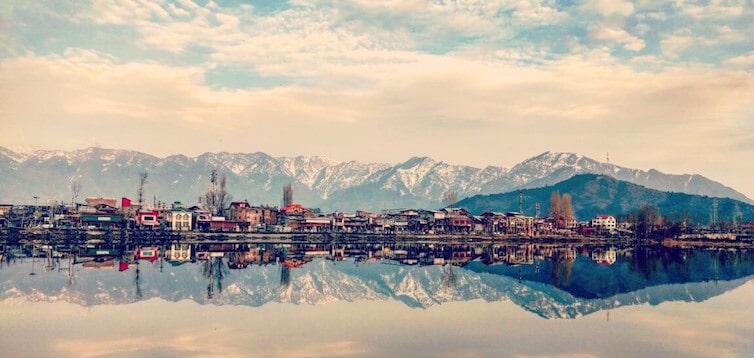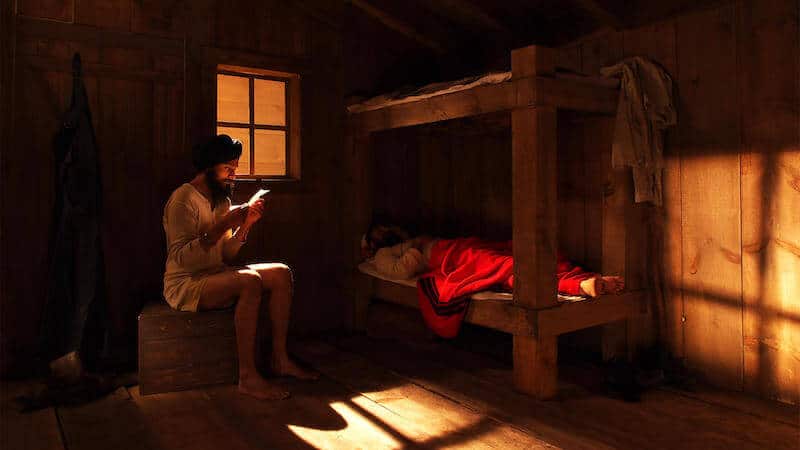
Image: Sumayya Syed ©
The Ministry of Utmost Happiness
Arundhati Roy
Hamish Hamilton, Penguin Canada, 2017
Share Article
It was late afternoon when the bus emerged from the long tunnel that bored through the mountains, the only link between India and Kashmir.
Autumn in the Valley was the season of immodest abundance. The sun slanted down on the lavender haze of zaffran crocuses in bloom. Orchards were heavy with fruit, the Chinar trees were on fire. Tilo's co-passengers, most of them Kashmiri, could disaggregate the breeze and tell not merely the scent of apples from the scent of pears and ripe paddy that wafted through the bus windows, but whose apples, whose pears and whose ripe paddy they were driving past. There was another scent they all knew well. The smell of dread.
Every fifty metres, on either side of the road, there was a heavily armed soldier, alert and dangerously tense. There were soldiers in the fields, deep inside orchards, on bridges and culverts, in shops and marketplaces, on rooftops, each covering the other, in a grid that stretched all the way up into the mountains. In every part of the legendary Valley of Kashmir, whatever people might be doing, they were in the rifle-sights of a soldier. And because they were in the rifle-sights of a soldier, whatever they might be doing, they were a legitimate target.
At each checkpost the bus had to stop, all the passengers had to disembark and line up with their bags to be searched. The passengers kept their eyes lowered. A gleaming, strutting young officer pulled three young men out of the passenger line-up---You, You and You. They were pushed into an army truck. They went without demur. The passengers kept their eyes lowered.
- excerpt
Arundhati Roy's new novel conveys pleasure and sorrow combined in ways acutely familiar to this reviewer, rarely encountered in literary fiction of the calibre that commands a global audience. The excerpted passage above is a letter-perfect description of my own last trip into the Valley, towards the end of summer in 1998. I experienced all of it: the bus, the harrowing mountain tunnel, the splendid late afternoon light suffusing the orchards, the soldiers brandishing rifles and sniffer dogs, coming aboard to search and intimidate passengers.
It was an experience I thought and reflected and dreamed about for months and years afterwards. I hardly spoke about it to anyone; since my poems about Kashmiri culture and family history were published two years ago, hardly anyone has asked. A year ago, I was forced to cancel a long-awaited return trip with my family. Following an extrajudicial killing a week before our departure, the Indian army had resumed its cycle of imposing curfews, internet and newspaper bans, and firing on civilians during funeral processions.
This cancelled journey was, among family and friends, a largely private grief. I have no Kashmiri community where I live. Kashmiris aren't numerous enough across Canada to support language classes, cultural centres, or soccer leagues. During that difficult week, trying to explain to parents of my son's friends why our summer plans had changed was a sharp reminder of just how persistently invisible Kashmir remains on this side of the world.
Layers of silence surround the trauma Kashmiris have suffered, living and dying under the Indian Army occupation for more than 25 years. Grief and humiliation, loss and scarcity, state repression and media blackouts, are mixed, for those in the diaspora, with fear of state reprisals against their families and loved ones if they speak out.
Like many Kashmiris trying to cope, both in and out of the Valley, I pursue the history and religious pluralism carried within Kashmiri poetry, to figure out how to keep it alive. Like many Kashmiri poets before me, I have a strong connection to Urdu and the Indian capital of Delhi where it took its earliest forms. The multiple languages, places of origin, and communities of belonging I was raised with have made the militarized nationalism of the partitioned postcolonial subcontinent a bludgeon, a headache, and a stifling constraint. I continually strive to write my way against it and over it and around it and through it.
All of this may or may not convey some understanding of why my experience of reading The Ministry of Utmost Happiness felt so singular, so tightly focused and compelling. I felt partly as if I were reading an artist's vindication of the things she had thought about since she won the Booker Prize and why she gave herself twenty years to write this series of intertwined fictions, and partly as if she were giving me a faithful report of both the heartbreaking realities she had witnessed and the possibilities she had imagined for Kashmir during my absence from it. I could have been in Delhi, listening to a storyteller recite it all from memory, by firelight, in a crumbling courtyard somewhere off the narrow bazaar lanes behind the Jama Masjid.
What the occupation of Kashmir has done to its inhabitants, how badly it has eroded India's democratic fabric, form the robust emotional heart of the novel, binding together its many characters across the subcontinent. Yet reviewers in New York and Toronto avoid any mention of Kashmir, using the novel's much-heralded publication to chatter instead about Roy's fame and prettiness, lavish complaints about the "hulking"‚ "sprawling", "messy mille feuille", and imply, with condescension seldom leveled at male writers of Roy's stature, that her political activism has perhaps hampered her literary skill. Their silent treatment is conspicuous only to readers familiar with those other, longer-standing, more devastating silences on Kashmir.
Roy chronicles the loss of intimately known, syncretic versions of Muslim culture which could once be considered an ordinary part of life in urban north India, another of the book's sorrowful pleasures. Customs and habits shared across religious divides, among lifelong neighbours and intimate friends, become slowly displaced by a much newer and more public, brisk, state-decreed concept:
"The police arrested hundreds of Muslims — all auxiliary Pakistanis from their point of view — from the area around the railway station under the new terrorism law and threw them into prison."
This new construction of Muslim identity, implying monolithic foreignness and invasive peril, is too effective in helping to elect ideologues, too useful in provoking fear and collective punishment, not to be stripped of its centuries of native Hindustani patina; its slowly evolved blends of Prakrit and Persian into Dehlavi and Dakhani; its Sufi shrines and its serene unconcern with doctrinal piety and sectarian divisions. Aligning her authorial omniscience with kittens and owls, with the scruffy, the obscure, the struggling and the disenfranchised, Roy memorably chooses to haunt those corners of Delhi where, among underpaid ustads, scorned hijras and blind imams, in poetry and prose, that suspicious notion of coexistence may still be found.
I admired the compassion, emerging in clarity as the novel progresses, with which Roy assembles the novel's constituent parts out of chronological order. When moments of horror come, we have been forewarned, and can gather the composure to look at them steadily, and connect them to moments of nuance and understanding. This rare and skillful feat makes ample reward for sticking with the book through its initial, occasionally puzzling meanderings.
The Ministry of Utmost Happiness also dwells on the compassionate potential of the built environment, emphasizing the need for physical space as an essential precursor to the becoming, recovering, and expressing of selfhood. The Jannat Guest House, built by Anjum, the hijra and adoptive mother, over the course of her recovery from violent trauma in the Gujarat riots, affords its denizens a recuperative space away from the categorizing demands of the Duniya: Are you man or woman? Torturer or patriot? Hindu, Muslim, Sikh, or Christian? Freedom fighter or terrorist? Hurry up and answer so I know what to do with you; don't waste my time with your nuance and complexity. While wars continue and fascism continues to rise, Roy's fictions likewise constitute a lasting house of respite from those forces. They aren't a solution; it isn't literature's job to provide a solution; but neither is literature quite doomed to let those forces off the hook, or to acquiesce, dutifully, to the trope that no solutions are ever possible.








